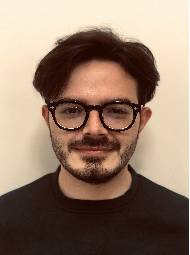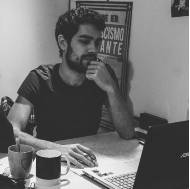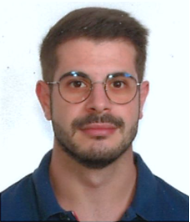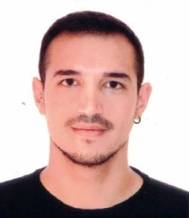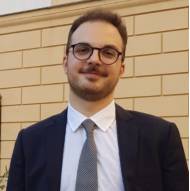XXXVI
XXXVI
|
PhD Student |
Background and Research Project |
Graphical Abstract |
|
Syed Abdullah |
I am Syed Abdullah Shah, Ph.D student in "CHEMICAL, ENVIRONMENTAL, BIOMEDICAL, HYDRAULIC AND MATERIALS ENGINEERING" at the University of Palermo. I got my bachelor’s degree in mechanical engineering from International Islamic University, Islamabad in 2015. After that, I moved to Seoul, South Korea for my master study. I completed my master’s degree in mechanical engineering at the Sogang University, South Korea. During my master’s research, I have worked on a project titled "Development of Electro-Membrane Technology for Hybrid Low Energy Desalination Plant Energy Recovery Process”. The objective of this research project was to modify the nanocomposite membrane for the enhancement of the electrical performance of a membrane-based Electrochemical energy device, which is known as Reverse Electro-dialysis or Blue energy. My research project for this PhD course aims to extract minerals from brine solution via electrodialysis bipolar membrane technology (EDBM). On the hand also to harvest clean water and energy.
|
|
|
Lorenzo Barbara
|
Lorenzo Barbara is a Biologist, graduated from University of Palermo in Industrial Biotechnology. During his master's thesis, and in the subsequent period as a research collaborator, he conducted research in microbiology and organic chemistry. He is member of the H2020 EU Project WiderUptake team, and he is working on reduction and recovery of sewage sludge. His doctoral research includes the study of innovative technologies for reducing the sewage sludge production from urban wastewater treatments and the reuse of sludge in agriculture, such as the production of compost. Through the studies conducted on pilot-scale and full-scale plants, the major aims of the thesis include the reduction of sewage sludge from wastewater treatment plants and sludge reuse by providing economic and eco-sustainable technological solutions.
|
|
|
Nina Benistati |
I’m Nina Benistati, PhD student in “Chemical, Environmental, Biomedical, Hydraulic and Materials Engineering” at the University of Palermo. I got my master degree in building engineering-architecture in March 2020. Theme of my research program: The flow discharge estimation, especially during extreme events, and the evaluation of the impacts of the hydrodynamic variations in river ecosystem represent the main challenges for the protection of fluvial systems and the ecosystem biodiversity. In this research project we want to study the effects of flow hydrodynamics on bioindicators such as freshwater bivalves through the experimental monitoring of their behavior both in normal flow conditions and under environmental stresses. The identification of bioindicators behavior would allow us to monitor the extreme events evaluating the hydrodynamic effects on the river ecosystem. This research project is part of a broader research program aimed to develop an integrated monitoring process based on the combination of hydrodynamic model and advanced no-contact radar technologies and biological sensors.
|
Link |
|
Laura Corbari |
I am Laura Corbari, PhD student in “Chemical, Environmental, Biomedical, Hydraulic and Materials Engineering” at the University of Palermo. I graduated in Environmental Engineering (LM-35) on March 2019 at the same University. From April to July 2019 I participated to Erasmus+ project and I worked in a company in Malaga (Spain). The field of my work was concerned the data science and visualization. From February to August 2020 I did a scholarship in the Laboratory of Ecology, Earth and Marine Sciences Department of the University of Palermo. My master’s thesis “Spectral description techniques of macroplastics and microplastics: potential of remote sensing” concerned the possibility to detect the marine litter, in particular the microplastics items, using the satellite images. The goal of my PhD project is to continue this research, conducting other experimental work. I will analyse the spectral signature of sea sampled polymers and I will evaluate the possibility to monitor the plastic pollution through the remote sensing. Basing on the satellite data and on the sea survey, I would like to carry out a Lagrangian model that could predict the aggregation of plastic litter. Thanks to the collaboration with the laboratory of Ecology I will evaluate the effects of plastic marine litter on marine organisms and their implication on ecosystems functioning. |
Link |
|
Michele Gammino |
My name is Michele Gammino PhD student in “Chemical, Environmental, Biomedical, Hydraulic and Materials Engineering” at the University of Palermo. I got my Bachelor Degree in Chemical Engineering and a Master’s Degree in Engineering and Materials Science at the University of Palermo in 2019. My research project is based on the development of new multi-functional nano and biocomposite materials obtained by classical manufacturing processes and by the 2d and 3D electrospinning process. The research activity considered in this program is linked to that already carried out by the research group led by Professor Roberto Scaffaro, which I have been a member. More in detail, the objective of my project concerns the design and development of biopolymer matrix platforms with added carbon and non-carbon particles, for the removal of pollutants from water. The design of multifunctional polymeric systems that have the ability to sequester, degrade and remove more pollutants together turns out to be a great challenge that presents different difficulties. In this perspective, my PhD research project aims to extend and improve the development of these materials for the simultaneous removal of pollutants of various kinds and at the same time pay attention to their recycling and reuse.
|
|
|
Giulia Infurna |
My Name is Giulia Infurna, I graduated with honour in Chemical Engineering (Product) from the University of Palermo. In the last year, I joined Prof. Dintcheva’s research group in two different projects: the first one concerning coatings for Cultural Heritege protection, and the second one about coatings and paints for naval applications. Since I’m interested in circular economy, bio-economy and the impact of human productivity on the environment, as well as processing of materials, I’m going to propose a way to reuse waste, from forest and agriculture industry or waste management industry, as filler of biodegradable polymers by means of conventional processing methods, trying to standardize and optimize the process.
|
Link |
|
Riccardo Miranda |
My name is Riccardo Miranda and I graduated in Aerospace Engineering in March 2020 at the Università degli Studi di Palermo. My master thesis, titled “Optimization of mechanical performances of hybrid adhesive joint between aluminium alloy and fiber reinforced plastic” inspired my PhD work, which aims to evaluate treatments that can improve the interactions between two dissimilar materials. In particular, I want to study how these treatments change the mechanical behaviours of innovative Fibre Metal Laminates, materials composed of sequential stacking of metal and composite layers, that have found applications in aerospace and automotive sectors (for example GLARE on the Airbus A380). The study is conducted through innovative type of mechanical test and robust numerical models based on I and II fracture modes.
|
|
|
Nadia Mourkri |
I am Nadia Moukri, PhD student in in Chemical, Environmental, Biomedical, Hydraulic And Materials Engineering. I graduated in Chemical Engineering from University of Palermo. My research project aims to develop an electrochemical immunosensor for the detection of biomarkers of inflammatory diseases with a focus on eosinophilic asthma. An immunosensor is a type of biosensor in which a specific target analyte, antigen, is detected by formation of a stable immunocomplex between antigen and antibody as a capture agent. This complex results in generating a measurable electrical signal given by a transducer. Nanomaterial technology will be exploited to obtain a competitive sensor with traditional analysis methods. Nowadays there is a growing interest in the development of innovative approaches for the quantification of specific biomarkers in biological fluids. The proposed biosensors based on nanomaterials will be able to reach and exceed the conventional standards (ELISA assay) in terms of detection time, accuracy, and cost.
|
|
|
Carmelo Morgante |
My name is Carmelo Morgante. I graduated in Chemical and Process Engineering with the highest honours at the University of Palermo in 2020. My Master’s degree thesis, partly carried out at DLR (Stuttgart, Germany), was based on the modelling and experimental testing of an innovative membrane crystallizer for mineral recovery from desalination brine, in particular magnesium hydroxide. The idea of solving global environmental issues such as water and mineral scarcity inspired my PhD project. Aiming towards the implementation of the Circular Economy concept, my project consists in the development of advanced simulative platforms to evaluate both technical and economic performances of innovative brine management technologies called Zero Liquid Discharge. ZLD systems are a set of processes combined in a suitable manner to minimize the volume of brines discharged to the environment by recovering valuable minerals. Such analyses will provide essential indications for the prototyping of an innovative crystallizer (for the recovery of magnesium) and EDBM (Electrodialysis with bipolar membranes for the production of acids and bases). They will be experimentally tested within in the framework of three different European projects (Water Mining, Rewaise and SEArcularMINE).
|
|
|
Dario Presti |
Dario Presti is an Environmental Engineer graduated from University of Palermo. His master’s thesis conducted in collaboration with the Universitat Autònoma de Barcelona (Spain), titled “Advances in resources recovery from wastewater treatment: a new protocol for PHA extraction” inspired the doctoral work he is currently conducting. He is member of the H2020 EU Project WiderUptake team, and he is working on polyhydroxyalkanoates (PHA) recovery from urban wastewater treatment by mixed microbial cultures. Dario’s doctoral research includes the whole PHA producing process, from sewage sludge fermentation, to culture selection, biopolymer accumulation and downstream processing. The aims of the thesis include modelling the whole process, identifying the optimum operational conditions and parameters to maximize the process productivity and sustainability, and developing innovative methods for PHA extraction from bacterial cells.
|
|
|
Salvatore Romano |
My name is Salvatore Romano and I graduated in Chemical Engineering at the University of Palermo in 2020. I am a PhD student in Chemical, Environmental, Biomedical, Hydraulic and Materials Engineering at the University of Palermo. The aim of my research project is to investigate novel routes for the recovery of magnesium from natural and artificial waste brines. Magnesium can be recovered by means of a reactive crystallisation process employing an alkaline solution to precipitate magnesium hydroxide (Mg(OH)2). This process can reduce the environment impact of waste brines and produce a high added value product, which is widely used in various fields such as chemical, medical, pharmaceutical, paper, food and wastewater treatment. However, obtaining Mg(OH)2 particles in line with market requirements represents a challenging task. The high environmental benefits and the complexity of this intriguing challenge has motived me to embark on this topic. My research activities focus on (i) the experimental investigation of the primary and secondary mechanisms of the Mg(OH)2 crystallisation process; (ii) the development of modelling tools for the prediction of the above mentioned process in many working conditions. An innovative colorimetric technique will be also developed to assess the precipitation reaction using a pH indicator. All activities will be carried out within the European Project H2020 “SEArcularMINE”.
|
|
|
Francesco Traina |
Francesco Traina is a civil and environmental engineer who graduated with a master's degree in Engineering and Innovative Technologies for the Environment (LM-35) with 110/110 cum laude from the University of Palermo in July 2020. His research project involves the transformation, by specific bacterial strains appropriately selected, of liquid and solid waste from the citrus industry into new products, bioplastics, which, being biodegradable, allow to reduce the impact on the environment at the end of their life cycle. The innovation introduced in the proposed research project is the implementation of the biological synthesis processes of biopolymers through advanced technology processes, such as membrane bioreactors (MBR). Indeed, these systems allow for more effective biomass selection than conventional systems, as they base selection solely on metabolic and kinetic principles, rather than on the ability of the biomass itself to aggregate into sedimentable flocs. The application of this technology is therefore expected to enhance the selection of biomass producing biopolymers and thus the productivity of the biopolymers themselves.
|
|
|
Dario Treppiedi |
Dario Treppiedi is a Ph.D. student in “Chemical, Environmental, Biomedical, Hydraulic and Materials Engineering”. He gained a Bachelor and a Master’s degree in in Environmental Engineering at the University of Palermo. During his graduation course he spent two months at University of Trento, where he worked on his Master’s thesis, titled “Statistical analysis of extreme rainfall in the Province of Trento”. This experience increased his interest in studying how the hydrological cycle is varying under the stress of climate change. His doctoral research focuses on exploring the mutation of local and large spatial scale precipitation fields, linked with other meteorological variables, such as temperature and humidity. Particular attention is currently devoted to new techniques in trend detection, especially for short-duration and high-intensity rainfall events. Furthermore, innovative methods and algorithms for separating rainfall events basing on their magnitude are being studied, with the aim to provide a useful instrument to reduce hydrological risk.
|
|





